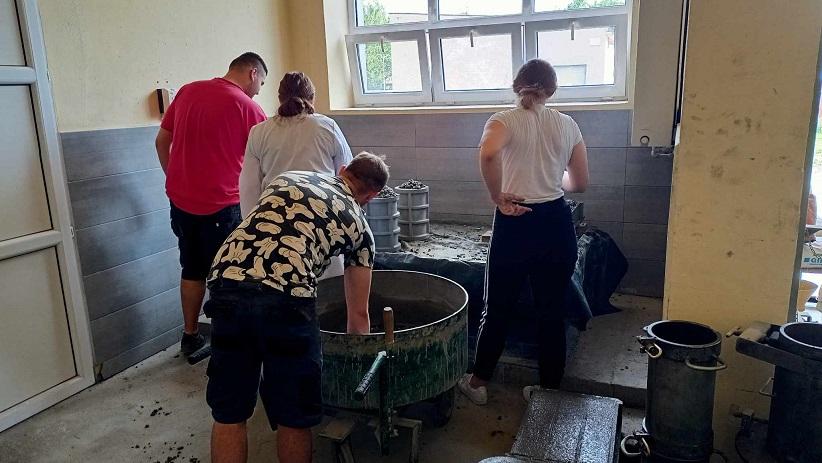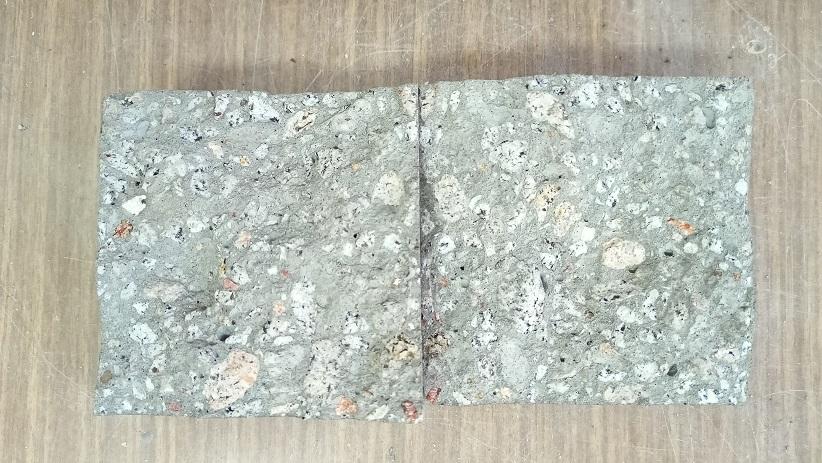Students explore the possibility of reusing aggregates from ceramic waste
Most often, when talking about recycled aggregate in the context of concrete technology, we mean a typical orange brick used, for example, to erect walls. Students from the Płock Branch of the Warsaw University of Technology undertook to investigate the properties of recycled concrete composed of sanitary ceramic cullet. The project is implemented as part of the Rector's grant for student research groups.
Students from the KONSTRUKTOR Civil Engineering Student Research Group are investigating the impact of cullet, i.e. crushed sanitary equipment (washbasins, bidets, toilet bowls, bathtubs, etc.) on the properties of hardened concrete by comparing the results of samples consisting of 100% of aggregate base (natural) and using the percentage exchange of natural aggregate for sanitary ceramics. Samples prepared in the laboratory are tested in terms of concrete density, compressive strength, and compression strength after roasting, as well as tensile strength during splitting and frost resistance. The young researchers also expanded their grant to study an elastic modulus.
"When planning research, we assumed that concrete containing cullet would be more resistant to compression after roasting because sanitary ceramics are fired at high temperatures," says Natalia Gasik-Kowalska, MSc, tutor of the KONSTRUKTOR Civil Engineering Student Research Group. “Our assumptions were confirmed. All eight series, with different water-cement index and with different content of cullet displayed a higher compressive strength for a roasting temperature of 750 degrees as compared to pure granite," she says.
The results of the tensile strength during splitting turned out to be a surprise. The students' research shows that the strength of the recycled aggregate did not decrease linearly with increasing cullet content – a large decrease in strength appeared already with a sample containing 15% cullet, remaining at a remarkably similar level in samples with a higher cullet content.
As part of the grant, a chemical analysis of the recycled materials used was also conducted (in cooperation with the Płock Chemists' Student Research Group) and the density of prepared aggregates, both granite and cullet, as well as their resistance to abrasion, shredding and absorbability were examined.
“Ceramic cullet is characterised by high absorbability. In other words, the cullet absorbs water from the created mixture, which very strongly affects its consistency. Such a mixture thickens, making the concrete unworkable. To solve this problem, we used superplasticisers, i.e. concrete additives which improve the consistency of the concrete mix,” explains Natalia Gasik-Kowalska, MSc.
Despite the problems encountered, the results of the research confirm that the ceramic cullet can be used to create high-strength concrete, which in the future can be used for the construction of a fountain during the expansion of the student square, located at the Class Building of the Warsaw University of Technology Branch in Płock, among other things. The analysis of the need for the extension of the square is the last element of the implemented grant. The study is conducted by the SONDA Student Research Group.



